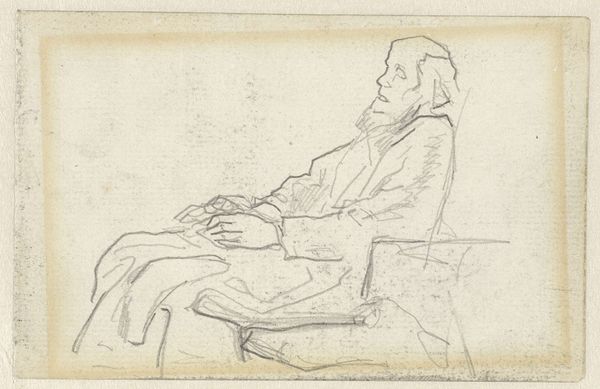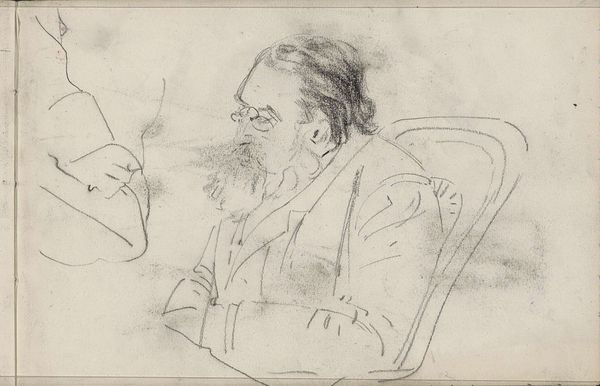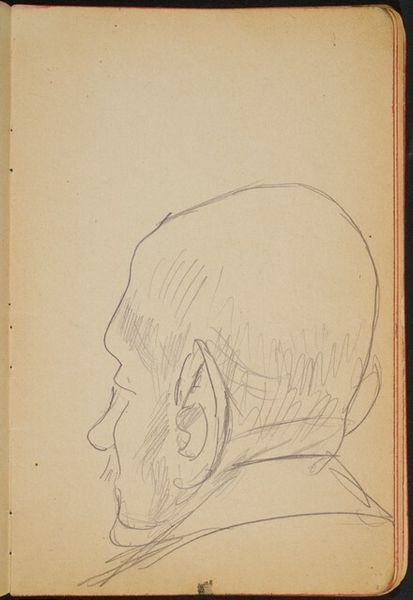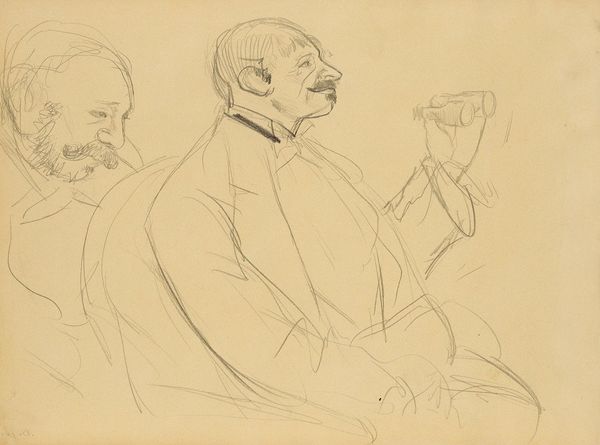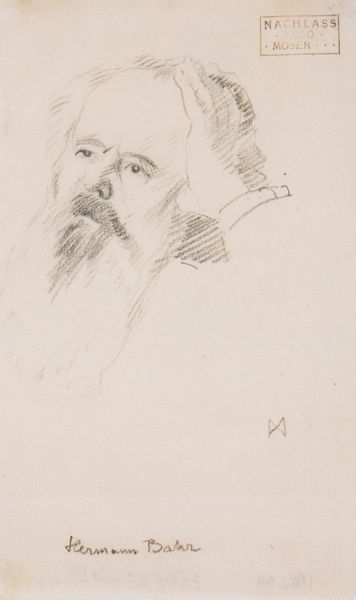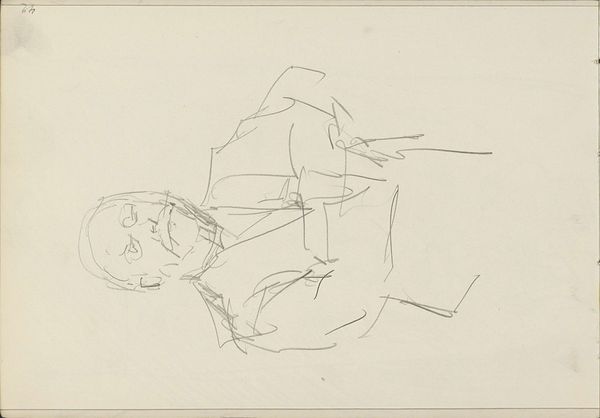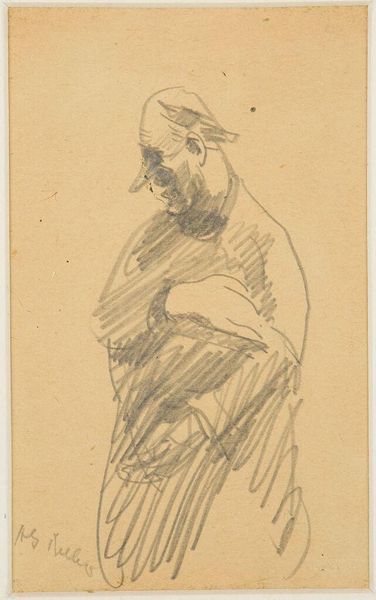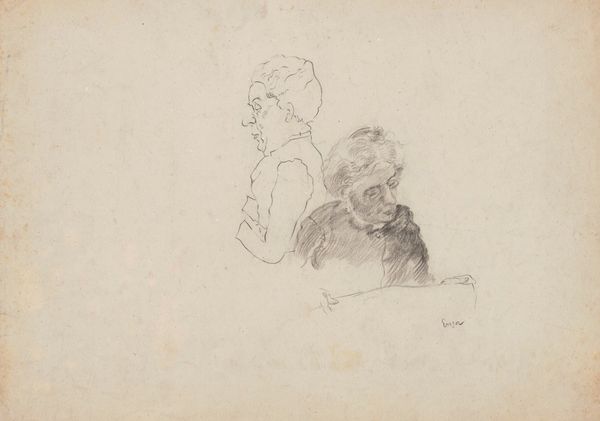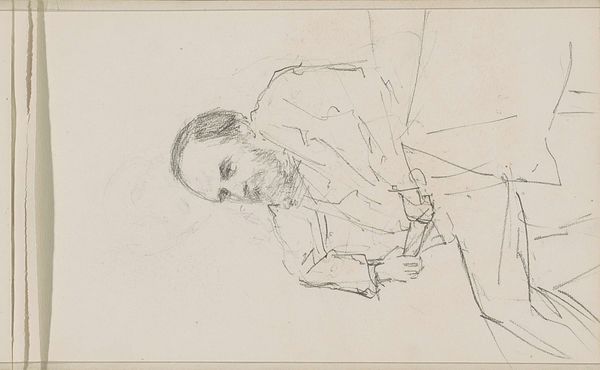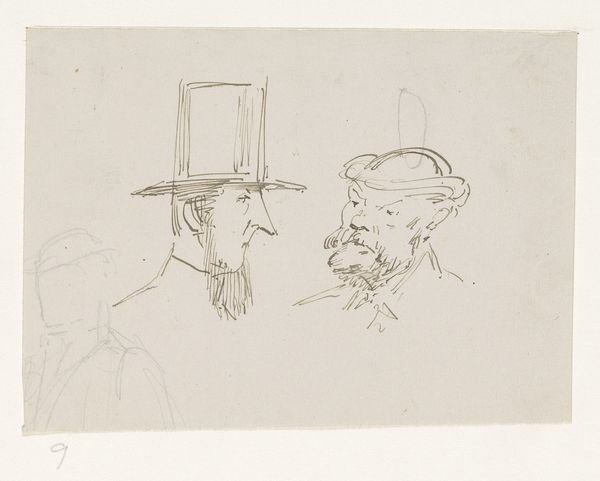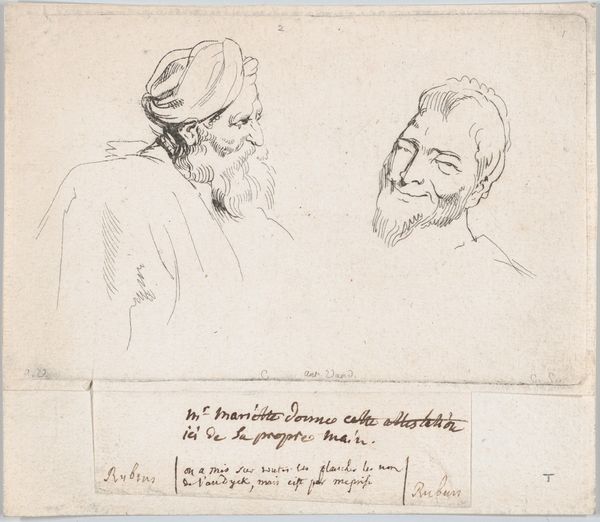
Meisje met een mand om haar arm en een kop van een man met een pince-nez en een baard 1848 - 1888
0:00
0:00
drawing, pencil
#
portrait
#
drawing
#
amateur sketch
#
imaginative character sketch
#
light pencil work
#
impressionism
#
personal sketchbook
#
idea generation sketch
#
sketchwork
#
character sketch
#
ink drawing experimentation
#
pencil
#
sketchbook drawing
#
initial sketch
Copyright: Rijks Museum: Open Domain
Editor: This intriguing sketch, entitled "Meisje met een mand om haar arm en een kop van een man met een pince-nez en een baard," created by Anton Mauve between 1848 and 1888, presents us with three distinct portraits. The unfinished nature, almost dreamlike quality of the pencil work gives a feeling of spontaneity and intimacy. What can you tell us about this combination of figures? Curator: Looking at this from a historical perspective, sketchbooks like these provide key insights into artistic practice and social dynamics of the time. The figure with the pince-nez immediately suggests a learned individual, perhaps of a higher social class, while the girl with the basket might represent the working class. Editor: So, Mauve may have been contrasting these social classes, even in a simple sketch? Curator: Precisely. It wasn’t uncommon for artists to explore the evolving social landscape through portraiture. The very act of including them in the same composition is a statement, a visual conversation about their relative positions. How do you think the institutional setting – its display in a museum like the Rijksmuseum today – changes the artwork's impact? Editor: I guess placing it in a museum elevates what might have been a private musing into a public artwork worthy of attention, even if it was just a sketch. It invites the modern viewer to interpret those social dynamics through a contemporary lens. Curator: Exactly. And that transition – from private sketchbook to public display – speaks volumes about the changing role of art and how we engage with the past. It also suggests value beyond the intended, reflecting current views back on history. Editor: That’s really interesting to consider. I see so much more in this work now than I initially did. Curator: Indeed. That’s the beauty of viewing art through different lenses, and understanding how socio-political context affects our interpretation of an artist’s intentions, conscious or otherwise.
Comments
No comments
Be the first to comment and join the conversation on the ultimate creative platform.
